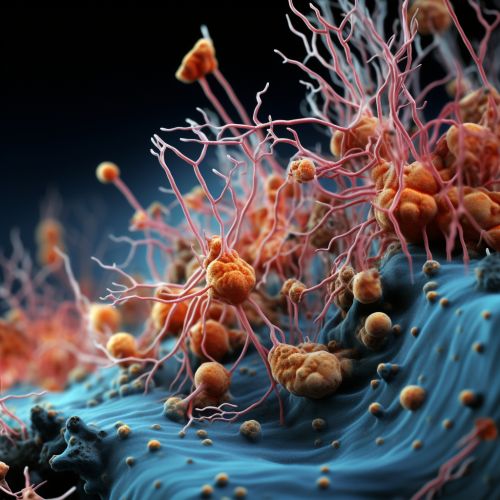Rhizobia
Introduction
Rhizobia are a group of soil bacteria that, through their symbiotic relationship with plants from the legume family (Fabaceae), are able to fix nitrogen from the atmosphere into a form that plants can use. This nitrogen fixation is a critical process in the nitrogen cycle, contributing to the fertility of soils and the productivity of ecosystems.
Classification and Diversity
Rhizobia are classified under the order Rhizobiales, which includes several families and genera. The most well-known genera include Rhizobium, Sinorhizobium (also known as Ensifer), Bradyrhizobium, Azorhizobium, Mesorhizobium, and Allorhizobium. These bacteria are Gram-negative, rod-shaped, and motile, with the ability to form specialized structures called nodules on the roots of leguminous plants.


Symbiotic Relationship with Legumes
The symbiotic relationship between rhizobia and legumes is a complex process that involves specific recognition between the two partners, bacterial infection, and the formation of nodules. The bacteria enter the plant roots through an infection thread, a specialized structure that the plant forms in response to signals from the bacteria. Once inside the plant cells, the bacteria differentiate into bacteroids, which are capable of nitrogen fixation.
Nitrogen Fixation
Nitrogen fixation is the process by which atmospheric nitrogen (N2) is converted into ammonia (NH3), a form that plants can use. This process is catalyzed by the enzyme nitrogenase, which is produced by the bacteroids in the root nodules. The ammonia is then converted into other nitrogenous compounds, such as amino acids and nucleotides, which are essential for plant growth and development.
Ecological Significance
The ability of rhizobia to fix nitrogen has significant ecological implications. By converting atmospheric nitrogen into a form that plants can use, rhizobia contribute to the fertility of soils and the productivity of ecosystems. This is particularly important in agricultural systems, where the use of rhizobia can reduce the need for synthetic nitrogen fertilizers, thereby promoting sustainable agriculture.
Genetic Diversity and Evolution
Rhizobia exhibit a high level of genetic diversity, which is reflected in their ability to form symbiotic relationships with a wide range of legume species. This diversity is thought to be driven by the co-evolution of rhizobia and their host plants, with each partner exerting selective pressures on the other. The study of rhizobial genetics and evolution can provide insights into the mechanisms of symbiosis and nitrogen fixation, as well as the co-evolutionary dynamics between microbes and plants.
Research and Applications
Research on rhizobia has led to numerous applications in agriculture and environmental management. For example, rhizobia are used as biofertilizers to enhance the growth and yield of legume crops, such as soybeans, peas, and lentils. They are also used in reforestation efforts to improve the survival and growth of legume trees, which can enhance soil fertility and carbon sequestration. Moreover, the study of rhizobia can contribute to our understanding of microbial ecology, plant-microbe interactions, and the global nitrogen cycle.
